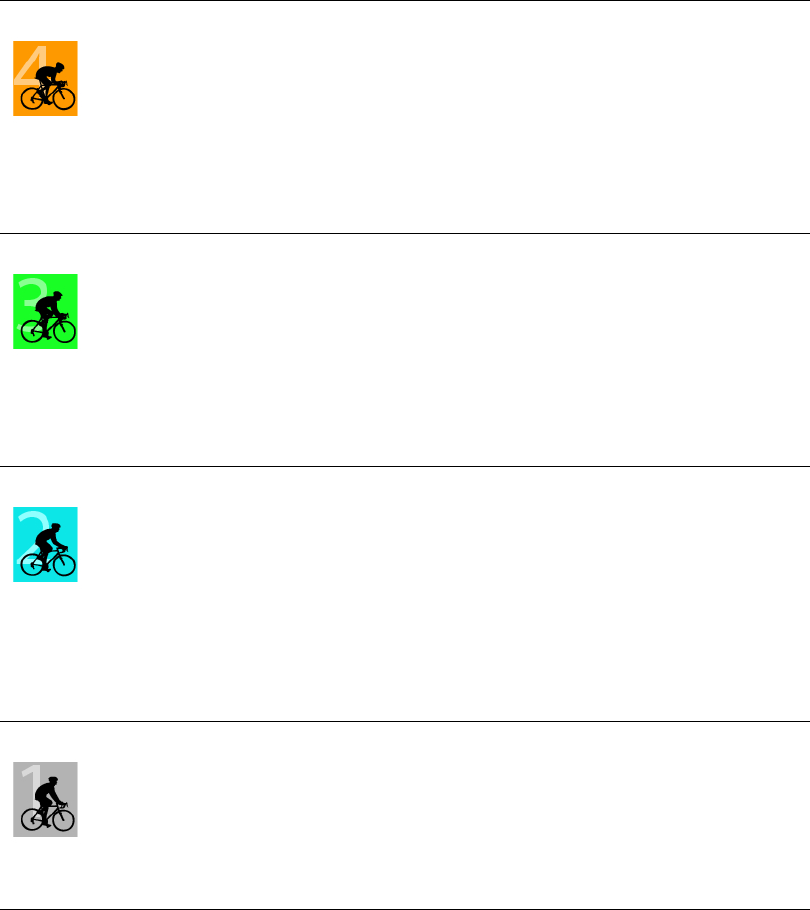
Target zone
Intensity % of
HR
max
, bpm
Example
durations
Training benefit
HARD
80–90%
152–172 bpm
2–20
minutes
Benefits: Increased ability to sustain
high speed endurance.
Feels like: Causes muscular fatigue and
heavy breathing.
Recommended for: Experienced cyclists
for all year round training varying
length. Becomes more important during
pre-competition season.
MODERATE
70–80%
133–152 bpm
10–60
minutes
Benefits: Enhances general training
pace, makes moderate intensity efforts
easier and improves efficiency.
Feels like: Riding in at good pace with
constantly high cadence.
Recommended for: Cyclists progressing
towards events or looking for
performance gains.
LIGHT
60–70%
114-133 bpm
60–300
minutes
Benefits: Improves general base fitness,
improves recovery and boosts
metabolism.
Feels like: Comfortable and easy, low
muscle and cardiovascular load.
Recommended for: Everybody for long
training sessions during base training
periods and for recovery exercises
during competition season.
VERY LIGHT
50–60%
104–114 bpm
20–60
minutes
Benefits: Helps to warm up and cool
down and assists recovery.
Feels like: Very easy, little strain.
Recommended for: For recovery and
cool-down exercises throughout the
training season.
HR
max
= Maximum heart rate (220-age). Example: 30 years old, 220–30=190 bpm.
Cycling in sport zone 1 (Very light) is done at very low intensity. The main training principle is that
performance level improves after training during the recovery period, not only during training. You can
accelerate your recovery process with very light intensity training.
Sport zone 2 (Light) is for endurance training, an essential part of any training program. Cycling sessions
in this zone are easy and aerobic. Long-duration training in this light zone results in effective energy
expenditure. Progress will require persistence.
Aerobic power is enhanced in sport zone 3 (Moderate). The training intensity is higher than in sport zones
1 and 2, but still mainly aerobic. Training in sport zone 3 may, for example, consist of intervals
followed by recovery. Cycling in this zone is especially effective for improving the efficiency of blood
circulation in the heart and skeletal muscles.
If your goal is to compete at top potential, you will have to train in sport zones 4 and 5. In these zones,
you cycle anaerobically, in intervals of up to 10 minutes. The shorter the interval, the higher the
intensity. Sufficient recovery between intervals is very important. The training pattern in zones 4 and 5
is designed to produce peak performance.
Polar CS600 User Manual 45


















